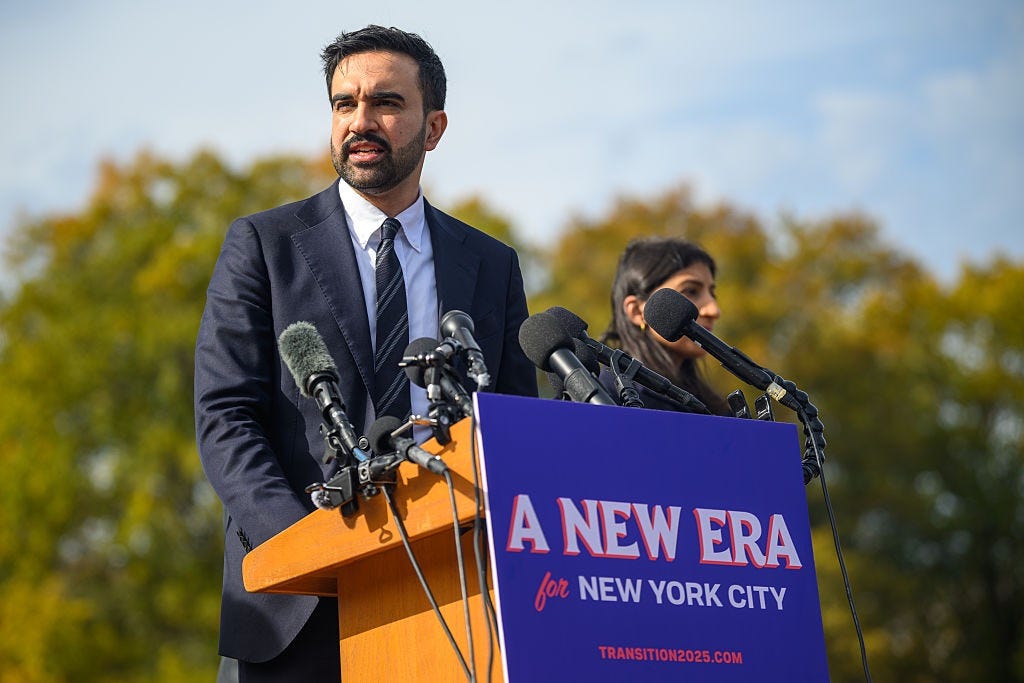What Is Affordability?
Abundance offers a solution to the rising costs facing voters.
Just so you know: In addition to this column, Francis Fukuyama also writes for the main Persuasion mailing list. That means that if you don’t subscribe to Persuasion, you might miss out on receiving some of his essays!
Click here to manage your account and toggle on the button to receive emails for Persuasion. And as ever, thank you for supporting our community.
Zohran Mamdani, the newly-elected mayor of New York City, has made “affordability” the centerpiece of his campaign, to great success. If the Democrats focus on this issue in the year before the midterm elections, they have a good shot at retaking the House by a substantial margin. In order to increase affordability, Mamdani has proposed policies like making bus fares free, and controlling rents across the city.
But what is “affordability?” One might be tempted to equate it with inflation, typically measured by the Consumer Price Index, the issue that brought down Joe Biden’s and then Kamala Harris’ campaigns. In the wake of the November 4 election results, Donald Trump is foolishly replicating Biden’s mistake of denying that consumer prices are rising, claiming in fact that they have fallen under his presidency. They have not, and everyone knows this.
However, “affordability” may be more properly understood as something different from consumer prices, and inequality something different from income inequality as measured by things like the Gini coefficient. One of the biggest items in the average American’s monthly budget is housing, and the affordability of housing has been falling dramatically over time. In 1985, a house cost on average 3.5 times the annual household income; today, it is more like 5 times. Median house prices have gone from 4-5 times the median income, to 6 times today. The situation is no better for renters: the ratio of median rents to median income has increased from 25 to 30% over the past two decades; 50% of all renters have to pay more than 30% of their incomes on rent, compared to 41% two decades ago. The situation is worse in blue cities like San Francisco or New York, where working class people have been priced out of the housing market in areas anywhere near where they work. In the former, they have to live in distant suburbs like Stockton or Visalia and endure commutes of an hour or two to get to work each day.
Facts like this indicate that Gini coefficients and the Consumer Price Index no longer adequately measure the affordability problem. While average Americans suffer from rising fuel and grocery prices, the real inequalities lie in factors like housing and transportation. And the housing crisis in urban America is almost entirely due to inadequate supply. Rent controls on a supply-limited stock of housing will in the long run create further inequalities, as the lucky people who live in a rent-controlled apartment will hang on to it tenaciously and try to hand it down to their children. Rent control will reduce incentives to build new affordable housing, which in the long run is the only way that greater equality can be achieved. This was exactly the situation I experienced living in rent-controlled Santa Monica during the 1980s. Similarly, free bus fares will be a temporary affordability band-aid; a real solution would be to build fast rail connections between inner cities and distant suburbs.
This suggests that the abundance movement needs to focus on issues like housing and infrastructure as a means of getting at the root causes of the affordability crisis. Building more homes and reducing and ultimately reversing the long-term rise in housing prices and transportation costs is a direct way of reducing inequality in the United States. Mamdani’s proposals are short-term band-aids that will not address the long-term problem.
In the city of Medellin, Colombia, poor people living in the hillside barrios could not physically get to the middle-class neighborhoods where they had jobs as maids and busboys due to the violent gangs controlling the intervening territory. The city’s solution was to build a series of ski-lifts to carry them up over the gangs to connect to the metro system serving middle-class parts of the city.
This is not a solution that would work in San Francisco or New York, but certainly a rich country like the United States could come up with imaginative solutions to problems that directly affect citizens’ access to jobs and opportunities. As in Colombia, a solution is likely to entail building things, and the abundance agenda opens up a pathway to doing exactly that.
Francis Fukuyama is the Olivier Nomellini Senior Fellow at Stanford University. His latest book is Liberalism and Its Discontents. He is also the author of the “Frankly Fukuyama” column, carried forward from American Purpose, at Persuasion.
Follow Persuasion on Twitter, LinkedIn, and YouTube to keep up with our latest articles, podcasts, and events, as well as updates from excellent writers across our network.
And, to receive pieces like this in your inbox and support our work, subscribe below:





